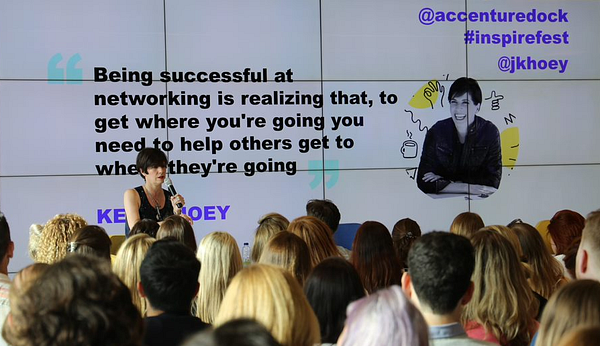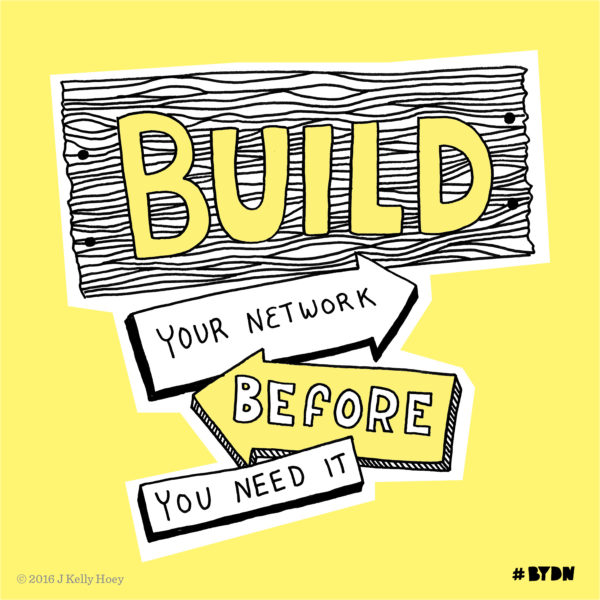Long Long Long before Build Your Dream Network hit the bookshelves back in January 2017, I was beating the networking drum but when I finally decided to share my spin on networking — the question was, what’s so special about your view on this subject? Good question. Was yet another book on this subject needed? Instead of beating the networking drum, would I just be beating a dead horse on this subject?
We live in interesting digital, multi-generations-in-an-evolving-economy times. What I’ve addressed in Build Your Dream Network is how the “old rules” of networking need to be interpreted for the economic and workforce realities. Our social networking habits need a healthy dose of Miss Manners. The seven touch-points to a sale can be achieved without a three martini business lunch. Swipe, tape and like to take conversations offline. IMHO individual networking behaviors (online and off) increasingly must align with changes in our demands as consumers (i.e. all the marketing trends point to personalization, customization, authenticity, transparency, targeted content) and the experience-centric business models we’re favoring (i.e. in the travel sector, companies which offer opportunities to connect with locals or attend curiosity retreats centered on ideas).
Networkers who are succeeding in the social, digital nomad economy know that:
- Networking starts online then heads offline. That first offline encounter doesn’t require coffee, a Skype will do.
- Social is reputational currency (or the new business card). When and how you show-up matters.
- Networking is 360. The new networking is not only omni-channel but is also multigenerational. Be nice to your interns and peers, not simply to your boss’ boss.
- Data is not the full story. The technologies and tools of social platforms cannot replace human judgment. Which leads to the next point….
- Listening is still the best networking tool. Listening or “good” cyber-stalking means taking note of the inter-personal dynamics and interactions within your network. How does a particular person or group react or behave? What information are they responsive to? What issues do they care about? How and when can they be called upon them for assistance? All of these data points need to be tallied up in order to make meaningful networking asks and choices.
- Networking is best played with short-term tactics for a long-term game. It goes back to how you show up everyday. Your most effective networking tactics are overlooked common activities and functionality (email signature line, out-of-office message, update to Summary section on Linkedin, Tweeting an article, or including a mention in a blog post).
- Sharing information is the new “give”, whether it is in an email update, a tweet or participating in a collaborative peer-to-peer forum.
- New networkers know that there is incredible business or career potential to be unlocked by giving within the collaborative, open and empowered spirit of niche platforms (i.e. GitHub, Slack). This applies to enterprise focused team management tools too.
- Generosity has its limits in the information economy. Faced with too many choices and overwhelmed by options in a 24/7 mobile world, saying no or not asking may be the most generous networking activity.
- Valuable new networking introductions occur over shared interests or experiences not from setting weekly targets for X number of coffee dates or Y numbers of business cards collected at a speed dating event.
- Networking at work still matters — beyond the next promotion or bonus cycle. Coworkers can turn into co-founders or your “friend & family” round. And face-time at the office includes digital. Those enterprise focused team management tools are daily networking opportunities (aka the water cooler or office party).

And thank you readers, book launch event attendees, those of you who hosted #BYDN conversation or event, used the hashtag, wrote a review! Almost a year to the day — Build Your Dream Network hits the bookshelves in paperback on January 2, 2018. Thank you.


